
How does Recyclekaro recover valuable metals from electronic waste (e-waste) and lithium-ion batteries?
When we recycle an item like a laptop, the first step is dismantling the unit and carefully separating its base materials. We remove the motherboard and strip the components, categorising each based on its material content. For instance, the integrated circuits (ICs), rich in precious metals, are shredded into powder. This powder is then subjected to advanced metallurgical processes, such as solvent extraction, to recover valuable metals like gold, silver, platinum, and palladium. When handling lithium-ion batteries, we ensure that critical metals such as lithium carbonate, cobalt sulphate, magnesium sulphate, nickel sulphate, and graphite are extracted. The laptop casing, often made from aluminium, plastic, or iron, is separated and processed accordingly.
What types of machines and equipment does Recyclekaro use?
We operate a manufacturing facility in Vada, Palghar, with a capacity of 4200 metric tonnes per year, which is already expanding to 9000 metric tonnes. The recycling process starts with procuring e-waste, which is dismantled, segregated, and processed. For example, when recycling a fridge, the aluminium or plastic body is separated, and any oil or gas in the compressor is extracted. The PCBs are processed further to separate metals such as copper. For lithium-ion batteries, recycling involves shredding and separating materials like aluminium, copper, plastic, and black mass, which contains critical metals like lithium and cobalt.
What differentiates Recyclekaro’s recycling process from traditional methods?
Esta historia es de la edición December 2024 de Electronics For You.
Comience su prueba gratuita de Magzter GOLD de 7 días para acceder a miles de historias premium seleccionadas y a más de 9,000 revistas y periódicos.
Ya eres suscriptor ? Conectar
Esta historia es de la edición December 2024 de Electronics For You.
Comience su prueba gratuita de Magzter GOLD de 7 días para acceder a miles de historias premium seleccionadas y a más de 9,000 revistas y periódicos.
Ya eres suscriptor? Conectar

ESP32-Powered AUDIO-VISUAL SIREN
This sound alternator is designed to simulate the effects of a police siren, combining sound and light to create a dynamic audio-visual experience.
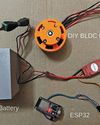
BLDC MOTOR With Web-Based Speed Control Using ESP32
Integrating wireless control into brushless direct current (BLDC) motor systems opens up exciting possibilities for applications such as remote-controlled cars, robots, and other innovative systems.
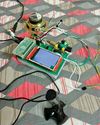
Pi Zero Portable BILINGUAL TRANSLATOR
This system is designed as a bilingual translator, leveraging the gTTS library to support multiple Indian languages, including English (en), Bengali (bn), Gujarati (gu), Hindi (hi), Kannada (kn), Malayalam (ml), Marathi (mr), Tamil (ta), Telugu (te), and Urdu (ur).
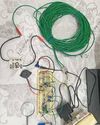
Op-Amp-Based VEHICLE THEFT DETECTOR
A simple, low-cost device can effectively alert homeowners or occupants if a parked vehicle is moved or tampered with.

loT SMART METER With Dashboard
Energy meters in homes track electricity usage, enabling accurate billing by governments and providers.

Choose The Right Cloud Platform For Implementing loT PROTOCOLS
Working with loT protocols like MQTT, AMQP, and CoAP on cloud platforms is essential for developing scalable and efficient lol applications. The choice of the programming platform will depend on factors like project requirements, existing skills, and target devices. Leveraging the appropriate libraries and cloud services can enable seamless integration of lol devices with cloud-based applications.

Why TMR SENSORS Lead Next-Generation Design
TMR sensors are gaining traction in industries needing precision and power efficiency. What makes them the go-to choice for modern designs?
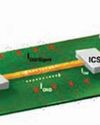
DESIGNING PCBs For EMI Management
Electromagnetic interference can derail your PCB’s performance. EMI management is not just a technical necessity but a hallmark of exceptional PCB design.

CUTTING COSTS, NOT CORNERS: Building Large Scale Applications With Open Source Software
Here are some strategies and best practices for leveraging open source to create enterprise-grade web and mobile applications without sacrificing quality or functionality.
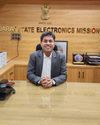
"We Are One Of India's Very Few State Bodies To Manage The Entire Lifecycle Of The Electronics EcosystemFrom Approvals To Subsidies."
What is Gujarat State Electronics Mission GSEM), and how is it attracting major investments in electronics manufacturing, particularly semiconductor manufacturing, to Gujarat? To delve deeper, Electronics For You’s Nijhum Rudra spoke with Manish Gurwani, the head of GSEM. Here is what he revealed...